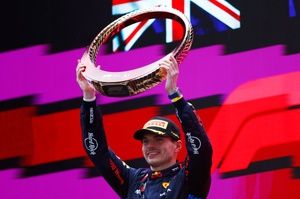Pirelli: No big issue if 2020 F1 tyres are rejected
Pirelli says it will have no big issue if Formula 1 teams decide they want to stick with the 2019 tyres next season, but it will demand to know why all the work it did on the 2020 rubber was rejected.

Photo by: Glenn Dunbar / Motorsport Images
Following complaints about the feel of the new 2020 tyres during a first test at the United States Grand Prix, F1 teams have been weighing up whether or not to go ahead with the switch for next year.
A further test of the tyres will take place after the season-closing Abu Dhabi Grand Prix and a decision will then be taken about what to do.
If an overwhelming majority of teams decide they do not want to continue with the 2020 rubber then Pirelli will revert to the 2019 design instead.
Speaking about the situation, Pirelli's head of car racing Mario Isola says that his company will not fight against continuing with the 2019 tyres if that is what teams decide.
"We want to test the 2020 construction properly in Abu Dhabi," he said. "And after the test, we analyse the data, and the teams have the option to ask for a change if more than 70% of the teams are of the same opinion.
"If there is this decision based on technical evidence that the 2019 tyre for any reason is working better than 2020, then we have no issues in keeping the 2019 tyre because it's a good product. So there is no reason to be against this decision.
"But obviously, we need to understand why we needed one year of testing and then we have a different result. That's important for the future."
Isola believes that the troubles with the 2020 tyres in Austin were caused by the low temperatures and the fact that the behaviour of the tyre is different, so new set-ups are required.
That is why he thinks a proper test after Abu Dhabi in warmer conditions will be more representative of what improvement the 2020 tyres can bring.
"The [Austin] test was not representative for a number of reason: not only the weather conditions, but also the fact that during the race weekend obviously, nobody at the time could optimise the setup of the car and the new construction is changing a little bit the balance.
"The profile of the tyre is different. So they have also to work around the aero package in order to optimise the aero package, and if you lose downforce, obviously the level of grip is lower.
"The new construction is also designed to work at a different pressure because to avoid increasing the pressure [as a consequence of car improvement], we need to design a tyre that has a higher resistance. So it has higher integrity resistance."
He added: "The new construction has to be used in a different way. It is clear that when you have something new, it takes a bit of time to understand the tyre and to extract the maximum performance from it.
"This happens every year. Last year, teams were a bit against the new 2019 construction. But at the end of the day, it was an improvement because this year we had much less blistering, the compounds were spaced in the right way and degradation was not very high."
The key improvement that Pirelli is chasing with the 2020 tyres is to widen its working range so teams and drivers find its easier to extract performance.
Be part of Motorsport community
Join the conversationShare Or Save This Story
Subscribe and access Motorsport.com with your ad-blocker.
From Formula 1 to MotoGP we report straight from the paddock because we love our sport, just like you. In order to keep delivering our expert journalism, our website uses advertising. Still, we want to give you the opportunity to enjoy an ad-free and tracker-free website and to continue using your adblocker.















Top Comments